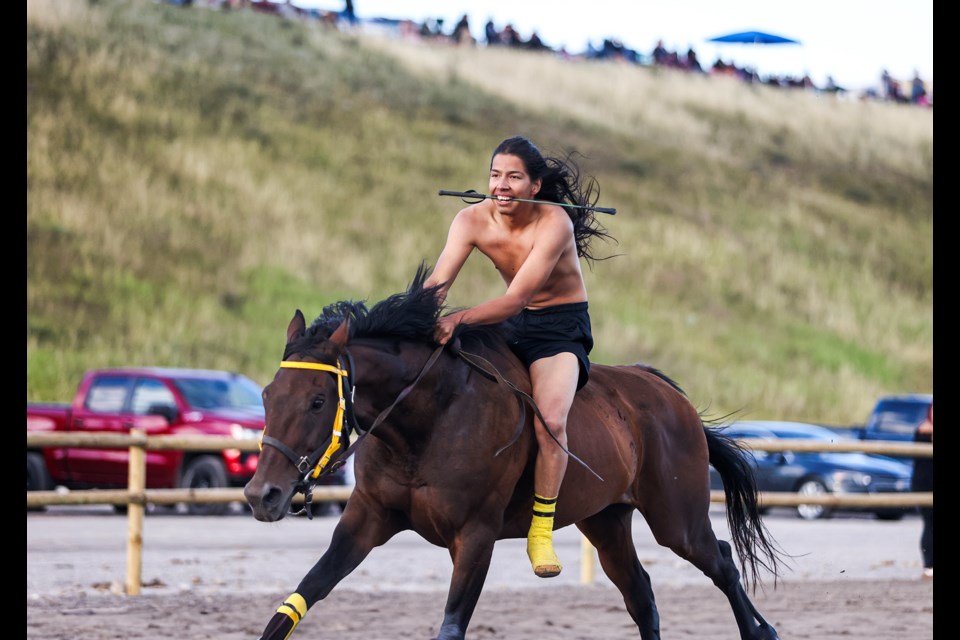ÎYÂRHE NAKODA – Mînî Thnî Indian Relay is back bigger, better and faster than ever.
The second annual race in Îyârhe Nakoda First Nation drew 25 teams across Alberta and Saskatchewan in a test of speed, agility and fearless spirit of both horse and rider in the heart-pounding tradition of Indian relay.
“It is absolutely an extreme sport. You’ve got to be straight to keep up,” said Watson Kaquitts, event coordinator and owner of Mînî Thnî Blue Feather – one of five local teams that competed this year.
The burgeoning event is still relatively new in Mînî Thnî, but its origins trace back centuries.
“It’s a cultural event, it’s historical,” said Kaquitts’ partner Brenda Lathlin, whom he lovingly calls his foreman for the pivotal part she played in helping organize the relay.
“This is the way our warriors had always challenged each other. When we talk about hunting bison on the plains – this is how they rode,” she said. “These riders are skilled riders.”
In the same way riders of old took to their steeds without saddles, relay sees one jockey per team ride bareback. It’s the jockey’s job to embody the skill and daring that define the sport, with the support of four teammates expertly handling eager thoroughbreds at the starting line.
Three laps on three different horses around the track challenge the rider to mount each one – often before it has stopped galloping and while the next has already started charging down the racetrack – navigating through turns and around other teams at breakneck speed, all while keeping an eye on the upcoming exchange.
The high-stakes ballet of speed, strength and split-second timing continues through each leg of the race.
It’s a dangerous spectacle and before it begins, an elder prays for the safety of the teams and their horses.
It’s also a show of cultural pride that begins with a parade, with each team showcasing rich traditions of heritage and stories of lineage that honour their ancestors and celebrate the enduring spirit of Indigenous peoples.
For Kaquitts, who advocated for building the Goodstoney Racetrack last year where the relay is hosted and was instrumental in getting the event off the ground, it’s much more than a competition.
“It makes me really proud to see this event grow, to bring people from all over and hear that we are putting Morley on the map,” he said.
“I hear that it gives our people a great sense of pride to stand up there and talk about the Stoneys, our land and the racetrack, which is in a really beautiful setting in the shadow of the mountains.”
This year, the event also hosted Lady Warrior and Junior Warrior races – showcasing the skills of expert female riders and up-and-comers on the track.
As an elder, Goodstoney First Nation councillor, grandfather and all-around horse lover, Kaquitts hopes to see more young people gravitate to the sport.
“It takes a lot of discipline and dedication, but so much of it is also learning the values of respect, teamwork and resilience that comes with riding and caring for horses, as well as developing relationships with other teams,” he said.
“Out there on the track, we are all family.”
The Local Journalism Initiative is funded by the Government of Canada. The position covers Îyârhe (Stoney) Nakoda First Nation and Kananaskis Country.




